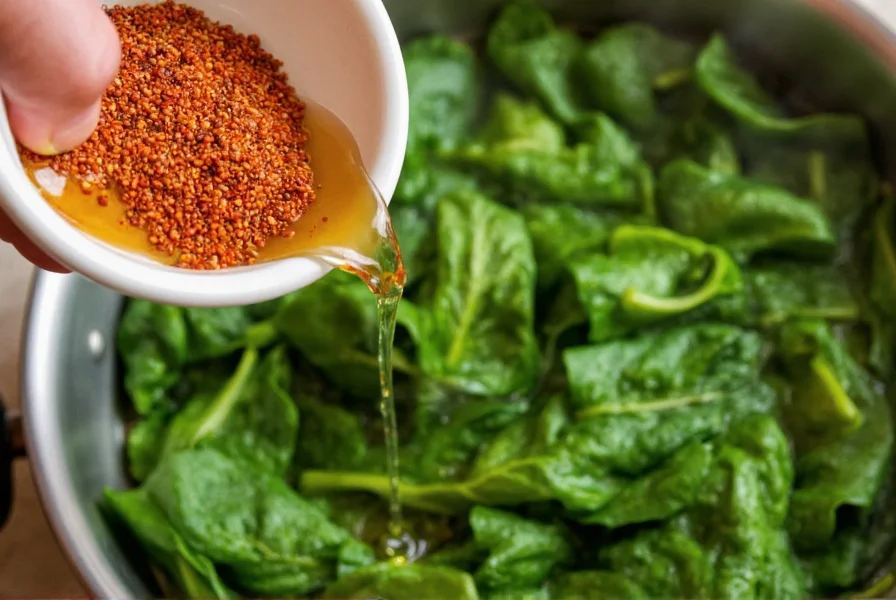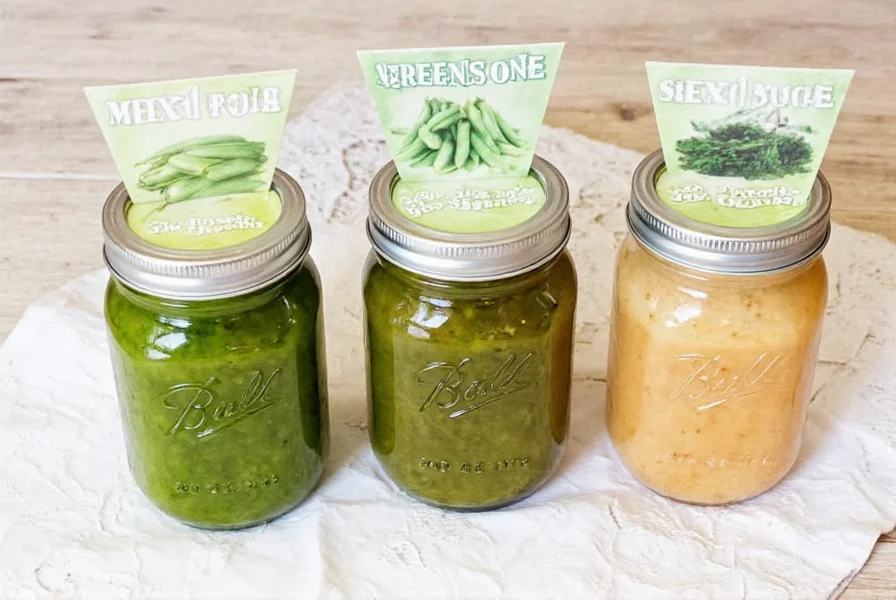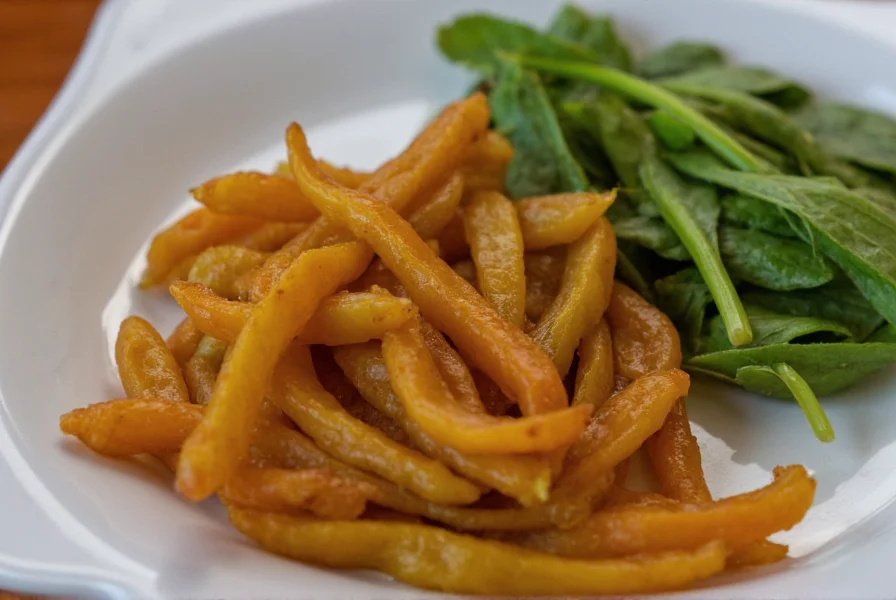When preparing leafy greens like collards, turnips, or mustard greens, the right pepper sauce transforms ordinary dishes into culinary highlights. This guide explores authentic techniques and recipes that honor Southern cooking traditions while offering practical adaptations for modern kitchens.
Why Pepper Sauce Complements Cooked Greens
Cooked greens naturally develop bitter compounds during the boiling process. The ideal pepper sauce for greens balances three critical elements:
- Acidity from vinegar or citrus counters bitterness
- Heat from cayenne or red pepper flakes enhances depth
- Seasoning like salt and garlic rounds out the flavor profile
Scientifically, the capsaicin in peppers binds with taste receptors that suppress bitter perception. This explains why traditional Southern cooks add pepper sauce near the end of cooking—preserving volatile compounds that would otherwise evaporate during prolonged boiling.

Traditional Pepper Sauce Formulations
Three authentic approaches dominate Southern kitchens, each suited to different cooking styles and taste preferences:
| Type | Ingredients | Best For | When to Add |
|---|---|---|---|
| Vinegar-Pepper Blend | 1 cup vinegar, 1-2 tsp cayenne, 1 tsp salt | Quick-cooked greens | Last 15 minutes |
| Simmered Pepper Sauce | Vinegar, peppers, onion, garlic, smoked paprika | Long-simmered traditional recipes | Middle of cooking cycle |
| Dry Pepper Seasoning | Crushed red pepper, black pepper, garlic powder | Pressure-cooked greens | With initial seasoning |
Creating Authentic Homemade Pepper Sauce
Follow these professional techniques to craft pepper sauce that perfectly complements your greens:
Basic Vinegar-Based Pepper Sauce Recipe
This versatile pepper sauce for collard greens works with any leafy green variety:
- 1 cup apple cider vinegar (or white vinegar)
- 1½ teaspoons cayenne pepper (adjust to taste)
- 1 teaspoon kosher salt
- ½ teaspoon garlic powder
- ¼ teaspoon black pepper
Mix ingredients in a small bowl. For best results, add during the final 15-20 minutes of cooking. Stir gently to distribute evenly without breaking down the greens. Let simmer uncovered to allow flavors to meld while maintaining vibrant color.
Advanced Simmered Pepper Sauce
For deeper flavor complexity preferred by Southern cooking experts:
- Sauté ½ chopped onion and 2 minced garlic cloves in 1 tablespoon bacon grease
- Add 1 cup vinegar, 2 tablespoons crushed red pepper, 1 teaspoon smoked paprika
- Simmer 10 minutes until slightly reduced
- Add to greens during middle phase of cooking (about 30 minutes before finish)
This method creates a more integrated flavor profile as the sauce components meld with the greens' natural juices during extended cooking.

Commercial Pepper Sauce Selection Guide
When homemade isn't practical, choose commercial options wisely. Look for these characteristics in the best pepper sauce for greens:
- Vinegar-forward base (first ingredient should be vinegar)
- Minimal additives (avoid excessive sugar or thickeners)
- Visible pepper flakes (indicates real pepper content)
- Acidity level between 3.0-3.5 pH for optimal bitterness reduction
Recommended brands include Louisiana Hot Sauce, Texas Pete, and homemade-style local brands. Avoid creamy or sweet hot sauces, which don't complement the earthy notes of cooked greens.
Troubleshooting Common Pepper Sauce Issues
Even experienced cooks encounter challenges when pairing pepper sauce with greens. Here's how to solve frequent problems:
Pepper Sauce Too Spicy
If your pepper sauce for greens overwhelms with heat:
- Add 1-2 tablespoons of apple cider vinegar to dilute intensity
- Stir in ½ teaspoon sugar to balance heat perception
- Add a splash of cooking liquid from unsauced greens
Not Enough Flavor Penetration
When pepper sauce doesn't integrate well:
- Ensure sauce contains adequate acidity (minimum 5% vinegar)
- Add during active simmering, not at the very end
- Use crushed peppers rather than whole for better infusion
Regional Variations Worth Exploring
Different Southern regions have distinctive approaches to pepper sauce for greens:
- Lowcountry (SC/GA): Adds a dash of sherry vinegar for complexity
- Delta Region: Incorporates a small amount of smoked meat drippings
- Appalachian: Uses wild pepper varieties like chiltepin for earthy notes
These regional adaptations demonstrate how pepper sauce for greens evolved as a practical solution to enhance available ingredients while respecting cultural traditions.
Final Recommendations
The perfect pepper sauce for greens balances tradition with personal preference. Start with the basic vinegar-pepper ratio, then adjust based on your greens' bitterness level and desired heat intensity. Remember that fresh greens typically require less sauce than frozen varieties, which often contain added sodium that amplifies heat perception.
For authentic results, add pepper sauce during the final third of cooking time—this preserves volatile flavor compounds while allowing sufficient integration. Taste test 5 minutes before finishing to make final adjustments, as flavors continue developing off-heat.
Frequently Asked Questions
Can I use hot sauce instead of making pepper sauce for greens?
Yes, but choose vinegar-based hot sauces like Louisiana or Crystal rather than creamy or sweet varieties. Add during the last 15 minutes of cooking at a ratio of 2 tablespoons per pound of raw greens. Avoid Tabasco for traditional preparations as its distinctive flavor can overpower the greens.
How much pepper sauce should I use for a standard pot of greens?
For 1 pound of raw greens, use 3-4 tablespoons of basic pepper sauce. Start with 2 tablespoons, then taste after 10 minutes of simmering and adjust. Remember that flavors concentrate as liquid reduces, so it's better to add gradually. Frozen greens typically require 25% less sauce due to pre-added seasonings.
What's the difference between using cayenne and red pepper flakes in pepper sauce for greens?
Cayenne provides immediate, uniform heat throughout the sauce, while red pepper flakes offer textured heat with varying intensity as they distribute unevenly. For consistent results in pepper sauce for collard greens, cayenne works better. For more complex mouthfeel, use coarsely crushed red pepper flakes. Many Southern cooks combine both for layered heat profiles.
Can I make a mild pepper sauce for greens that children will enjoy?
Absolutely. Create a mild pepper sauce for greens by using 1 cup vinegar, ½ teaspoon cayenne, 1 teaspoon paprika, and ¼ teaspoon garlic powder. The paprika adds depth without significant heat. Add a teaspoon of honey to further balance any residual spiciness. This version maintains traditional flavor while being approachable for younger palates.











 浙公网安备
33010002000092号
浙公网安备
33010002000092号 浙B2-20120091-4
浙B2-20120091-4